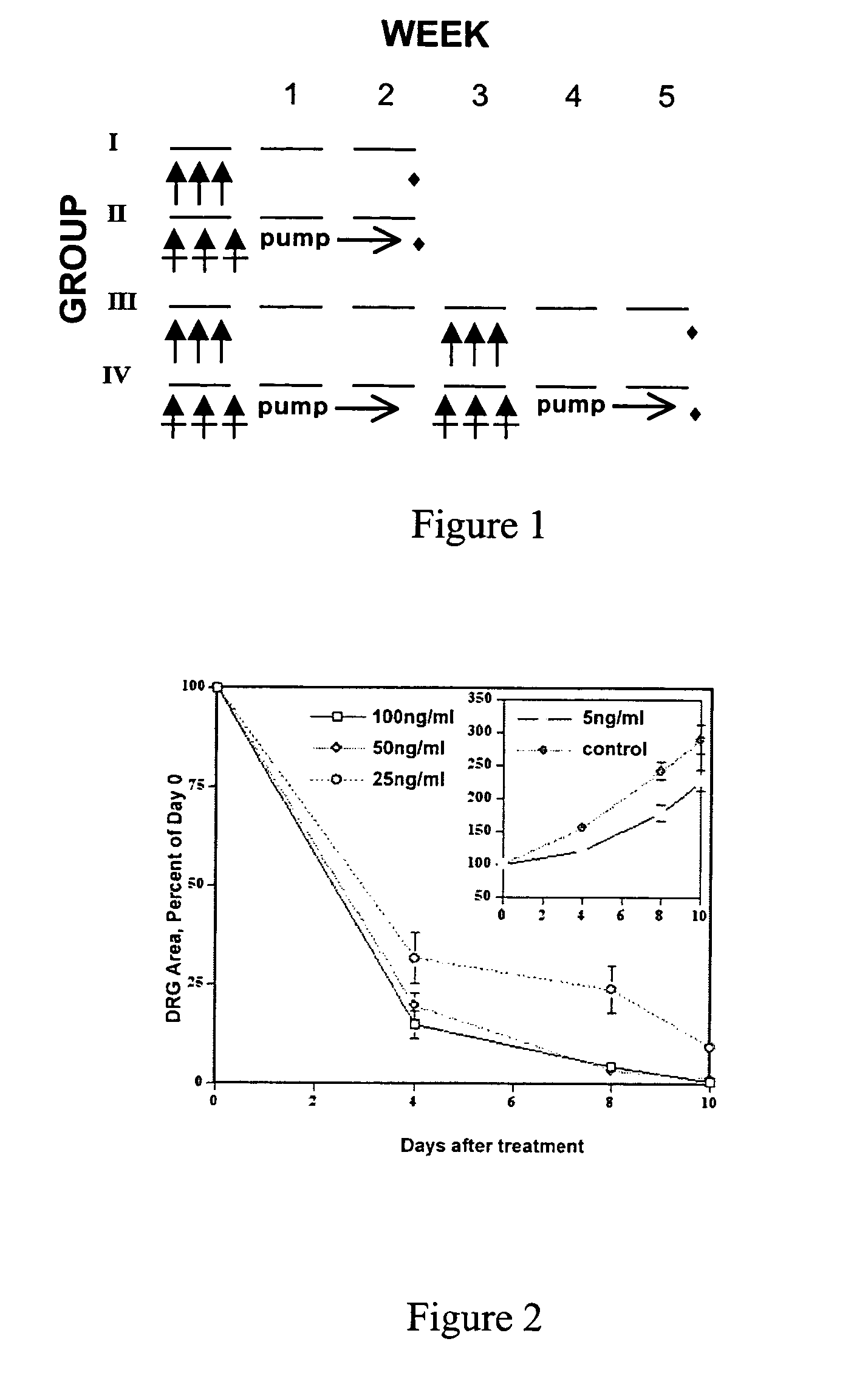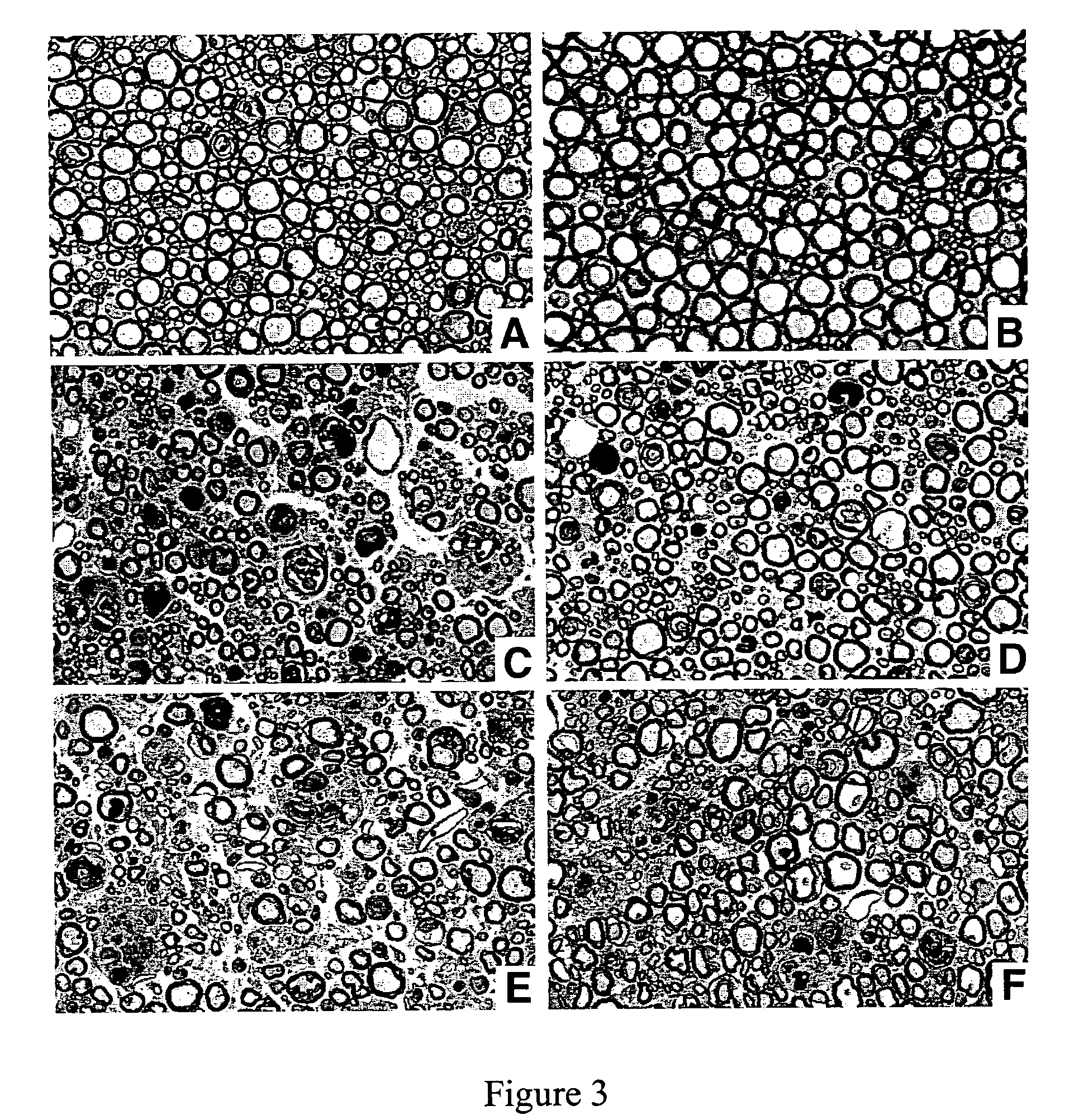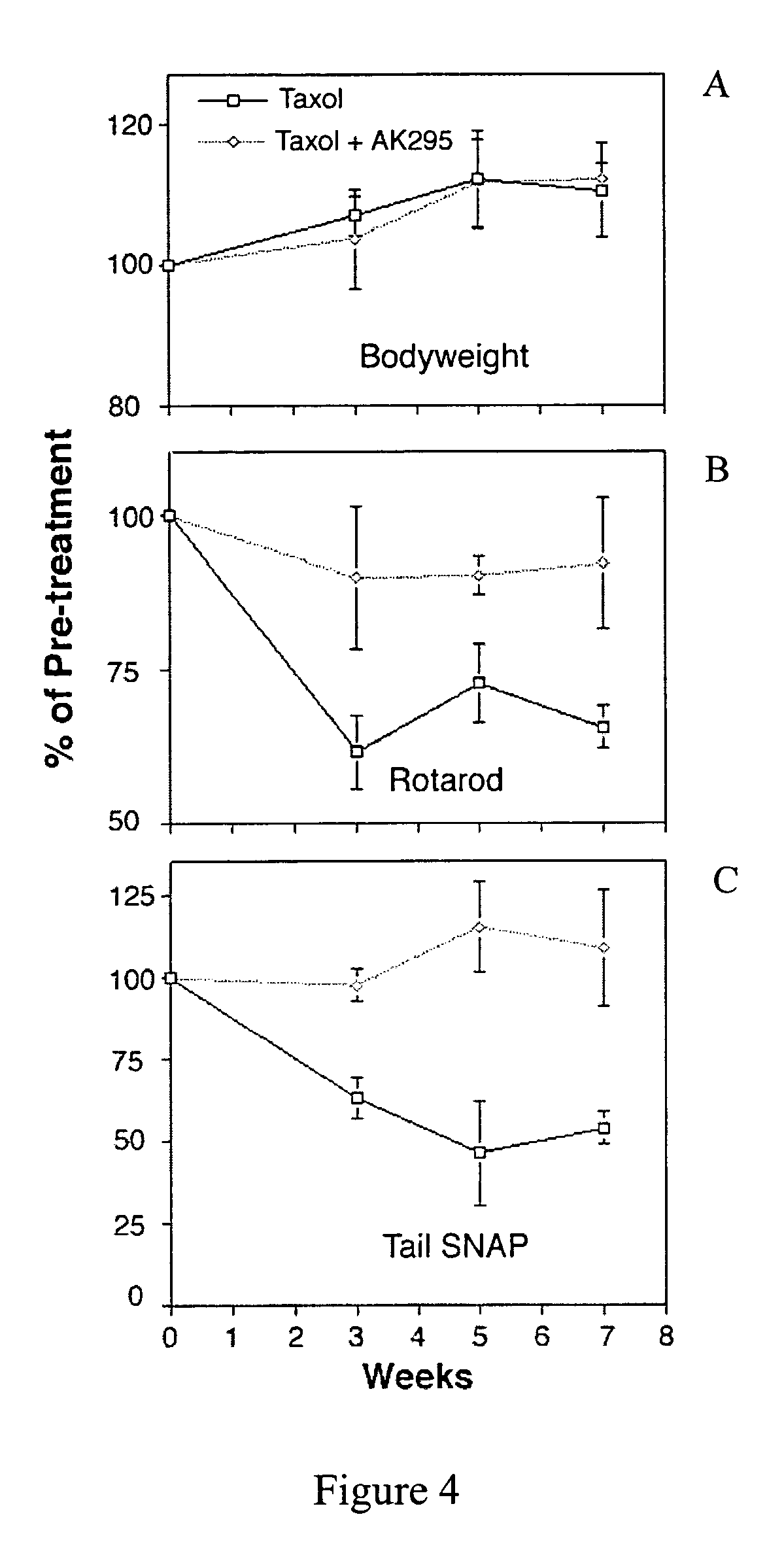Ketoamide inhibitors in chronic nerve disease
a ketoamide inhibitor and chronic nerve disease technology, applied in the field of calpain inhibitors, can solve the problems cytoskeletal degradation, protein receptor modification or activation, enzymes and cytoskeletal proteins, etc., and achieve the effect of effective treatment of calpain related pathologies
- Summary
- Abstract
- Description
- Claims
- Application Information
AI Technical Summary
Benefits of technology
Problems solved by technology
Method used
Image
Examples
example 1
AK295 Protects Against Paclitaxel-induced Axon Degeneration in DRG Culture
[0164]Exposure to paclitaxel caused dose-dependent axonal degeneration in cultured dorsal root ganglia. Doses of 25 ng / ml or greater caused rapid axonal degeneration; a dose of 5 ng / ml did not cause obvious degeneration but did slow axonal growth (FIG. 2). Degeneration occurred in a distal to proximal pattern (“dying back”) similar to that seen in DRG cultures exposed to vincristine [Wang, M. S., Y. Wu, D. G. Culver and J. D. Glass (2000). “Pathogenesis of axonal degeneration: parallels between Wallerian degeneration and vincristine neuropathy.”Journal of Neuropathology and Experimental Neurology 59(7): 599-606.]. Addition of AK295 (50 μM) to the culture media provided about 50% protection against axonal degeneration induced by 25 ng / ml paclitaxel for up to 8 days, as measured by the area of the DRG halo (data not shown).
example 2
AK295 Protects Against Paclitaxel Neuropathy in Mice
[0165]Paclitaxel caused dose-dependent axonal degeneration in mice. Two doses (3×30 mg / kg and 3×60 mg / kg) were tested. The low dose caused axonal degeneration in relatively few fibers, with inconsistent numbers of degenerating fibers (data not shown). The higher dose caused degeneration of a significant number of sensory fibers (FIGS. 3A-F), which was reproducible and suitable for our purpose of quantitative analysis. paclitaxel did not cause axonal degeneration in motor fibers.
[0166]Nineteen mice were used for the 3-week protocol: control (4), paclitaxel (7) and paclitaxel plus AK295 (8). Ten mice were used for the 6-week protocol: control (4), paclitaxel (3) and paclitaxel plus AK 295 (3). The animals treated with paclitaxel or paclitaxel plus AK295 showed weight loss of 1 to 3 grams in the first week, but regained a normal growth rate and were in good health for the remainder of the study (FIGS. 4A-C). Rotarod and electrophysiol...
example 3
Paclitaxel-induced Calpain Activation in PC12 Cells
[0170]PC12 cells were used to demonstrate that exposure to paclitaxel can induce calpain activation and that AK295 inhibits calpain activity. In PC12 cells there was both time and dose-dependent increase in calpain activity as measured by cleavage of a synthetic calpain substrate (FIGS. 6A-B). AK295 inhibited calpain-mediated cleavage of the substrate. It is of interest to note that AK295 reduced the baseline calpain activity measured in non-treated cells as well, without causing any apparent toxicity.
PUM
| Property | Measurement | Unit |
|---|---|---|
| body weight | aaaaa | aaaaa |
| pH | aaaaa | aaaaa |
| pH | aaaaa | aaaaa |
Abstract
Description
Claims
Application Information
 Login to View More
Login to View More - R&D
- Intellectual Property
- Life Sciences
- Materials
- Tech Scout
- Unparalleled Data Quality
- Higher Quality Content
- 60% Fewer Hallucinations
Browse by: Latest US Patents, China's latest patents, Technical Efficacy Thesaurus, Application Domain, Technology Topic, Popular Technical Reports.
© 2025 PatSnap. All rights reserved.Legal|Privacy policy|Modern Slavery Act Transparency Statement|Sitemap|About US| Contact US: help@patsnap.com



